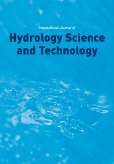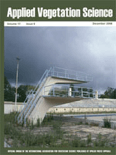
Journal of Mountain Science
Scope & Guideline
Charting New Frontiers in Earth-Surface Processes
Introduction
Aims and Scopes
- Mountain Geosciences and Hazards:
The journal publishes research on geological processes, including landslides, glacial dynamics, and tectonics, emphasizing the natural hazards associated with mountainous terrain. - Ecological and Environmental Studies:
Research on the ecology and environment of mountain regions, including vegetation dynamics, biodiversity, and the impacts of climate change on ecosystems is a core focus. - Hydrology and Water Resources Management:
The journal covers hydrological processes, water resource management, and the implications of climate change for water availability and quality in mountainous areas. - Socioeconomic Aspects and Community Resilience:
It includes studies on the socioeconomic dimensions of mountain communities, including tourism, land use planning, and the resilience of local populations to environmental changes. - Remote Sensing and Geospatial Analysis:
The use of remote sensing technologies and geospatial analysis in the assessment and monitoring of mountain environments is a significant methodological focus.
Trending and Emerging
- Climate Change Impacts:
Research on the impacts of climate change on mountain ecosystems, including glacial retreat, changing precipitation patterns, and their socio-economic consequences, is rapidly gaining traction. - Sustainable Tourism and Conservation:
Emerging studies focus on sustainable tourism practices and their role in conservation efforts, highlighting the balance between economic development and environmental protection in mountainous areas. - Technological Innovations in Monitoring:
There is a growing trend in utilizing advanced technologies, such as UAVs and machine learning, for monitoring and managing mountain environments, enhancing data collection and analysis capabilities. - Ecosystem Services and Resilience:
Research examining the ecosystem services provided by mountain environments and their role in community resilience is becoming increasingly important, linking ecological health with human well-being. - Socio-environmental Dynamics:
The interplay between social factors and environmental changes is gaining attention, particularly in understanding how communities adapt to and mitigate the impacts of climate change and natural hazards.
Declining or Waning
- Traditional Agricultural Practices:
Research related to traditional agricultural practices in mountainous regions has decreased, possibly due to a growing emphasis on modern agricultural technologies and sustainability. - Invasive Species Studies:
While previously a significant area of focus, studies specifically addressing invasive species in mountain ecosystems have become less common, perhaps overshadowed by broader ecological and biodiversity topics. - Historical Climate Data Analysis:
There has been a notable reduction in papers focusing solely on historical climate data analysis, as researchers increasingly integrate climate data with contemporary environmental changes and socio-economic impacts.
Similar Journals

Journal of Earth System Science
Advancing Earth Science Through Innovative ResearchThe Journal of Earth System Science, published by Indian Academy of Sciences, is a pivotal resource in the field of Earth and Planetary Sciences, boasting an impressive Q2 ranking in 2023. Since its inception in 2005, this journal has been dedicated to advancing our understanding of complex Earth systems, publishing high-quality research that spans across various disciplines within the geosciences. With an E-ISSN of 0973-774X and a commitment to Open Access, it makes cutting-edge scientific insights widely available to researchers and professionals alike. The journal serves as a vital platform for innovative research and critical discussions, making significant contributions to the global scientific community, particularly as we navigate the challenges posed by climate change and environmental sustainability. Located in Bangalore, India, it continues to foster international collaboration and discourse among scholars, reinforcing its role as an essential publication within the Earth and Planetary Sciences domain.

Frontiers of Earth Science
Innovating Insights into Our Planet's SystemsFrontiers of Earth Science is a prominent academic journal in the field of Earth and Planetary Sciences, published by Springer. With an ISSN of 2095-0195 and an E-ISSN of 2095-0209, this journal serves as a significant platform for researchers and professionals to disseminate their findings from 2007 to 2024. It is recognized for its impactful contributions within the category of Earth and Planetary Sciences, boasting a respected Q2 ranking in 2023. With a Scopus ranking of 64 out of 195, placing it in the 67th percentile, Frontiers of Earth Science continues to drive academic dialogue and innovation. The journal is dedicated to exploring a diverse range of topics, including geology, meteorology, and environmental science, and amplifying the understanding of Earth systems through rigorous research. Located in New York, USA, this journal embraces an Open Access model, ensuring that groundbreaking research is readily available to the global scientific community, thereby enhancing its accessibility and impact.

Vietnam Journal of Earth Sciences
Connecting Scholars, Shaping the Future of Earth SciencesThe Vietnam Journal of Earth Sciences, ISSN 0866-7187, is a premier publication from the Publishing House Science and Technology based in Viet Nam, dedicated to fostering advancements in the field of Earth and Planetary Sciences. Operating under a Q2 ranking in the 2023 category of Earth and Planetary Sciences (miscellaneous) and positioned at Rank #62 out of 195 in its general category on Scopus, this journal serves as a critical platform for researchers, professionals, and students seeking to disseminate and engage with high-quality scientific findings. Despite being part of the non-open access model, the journal is committed to providing compelling content, encompassing a range of topics from geological hazards to environmental sustainability, ensuring its relevance and contribution to both local and international scientific communities. With coverage that spans from 2018 to 2024, the journal is poised to continue its role in addressing pressing Earth science issues and fostering collaborations among scholars in an increasingly interconnected world.

All Earth
Fostering Interdisciplinary Dialogue on Environmental IssuesAll Earth is an esteemed open-access journal published by Taylor & Francis Ltd, dedicated to multidisciplinary research in the fields of Earth and Planetary Sciences, Global and Planetary Change, as well as Management, Monitoring, Policy, and Law. Since its inception in 2021, All Earth has swiftly positioned itself in the academic community, achieving notable rankings such as Q2 in Earth and Planetary Sciences and Q3 in related fields, showcasing its commitment to high-quality interdisciplinary scholarship. Researchers and professionals can benefit from its accessible content, which contributes to the ongoing discourse on critical environmental issues and innovative solutions for sustainable development. The journal is based in the United Kingdom and continues to be a vital source of information and inspiration for students and scholars aiming to tackle the pressing challenges of our planet through rigorous scientific inquiry and policy analysis.

Earth Systems and Environment
Championing Research for a Resilient EnvironmentEarth Systems and Environment, published by Springer International Publishing AG, is a leading peer-reviewed journal dedicated to the multidisciplinary study of natural and anthropogenic processes that shape the Earth's systems. With an impressive impact factor and consistently ranked in the Q1 category across various fields, including Computers in Earth Sciences, Economic Geology, and Environmental Science, it stands as a premier platform for researchers and professionals seeking to address pressing environmental challenges. The journal covers a wide spectrum of topics, from geology to global change, and emphasizes innovative methodologies and interdisciplinary approaches to understand and manage Earth systems. As an essential resource for scholars and practitioners, Earth Systems and Environment commits to excellence and facilitates open dialogue on critical issues affecting our planet.

International Journal of Hydrology Science and Technology
Bridging Theory and Practice in Environmental EngineeringThe International Journal of Hydrology Science and Technology, published by InderScience Enterprises Ltd, is a distinguished platform dedicated to advancing knowledge in the field of hydrology, environmental engineering, and water science. With an ISSN of 2042-7808 and an E-ISSN of 2042-7816, this journal, established in 2011 and continuing through 2024, serves as an essential resource for researchers, professionals, and students alike. Despite being categorized in the Q3 quartile across multiple disciplines including Earth and Planetary Sciences, Environmental Engineering, Waste Management and Disposal, and Water Science and Technology, the journal maintains a reputation for contributing significant findings that impact both theory and practical applications in addressing hydrological challenges. Currently unavailable through Open Access options, the journal remains committed to disseminating valuable research that informs sustainable practices in water resource management. The editorial team encourages submissions that explore innovative strategies and methodologies while fostering interdisciplinary discussions, making this journal a pivotal player in shaping the future of hydrological science.

APPLIED VEGETATION SCIENCE
Empowering researchers to shape the landscape of ecology.Applied Vegetation Science is an esteemed journal published by Wiley, dedicated to advancing the field of vegetation science. With a focus on ecology and nature conservation, this journal serves as a vital resource for researchers, professionals, and policy-makers alike. It holds an impressive Q1 ranking in Ecology and Nature and Landscape Conservation, and a Q2 ranking in Management, Monitoring, Policy and Law, positioning it among the top quartiles of its field as of 2023. The journal, with its ISSN 1402-2001 and E-ISSN 1654-109X, encompasses research spanning from its inception in 1998 to 2024, making it a rich resource for trends and developments in vegetation studies. While it is not currently an open-access publication, Applied Vegetation Science continues to uphold rigorous scientific standards and provides critical insights into managing and preserving ecosystems. Its impactful contributions are reflected in its strong Scopus rankings, solidifying its reputation as a cornerstone publication for the study and management of vegetation.

Modeling Earth Systems and Environment
Exploring innovative modeling techniques for environmental challenges.Modeling Earth Systems and Environment is a premier interdisciplinary journal published by Springer Heidelberg, dedicated to advancing the understanding and modeling of Earth's systems and environmental processes. Since its inception in 2015, this journal has established itself as a vital resource within the academic community, attaining a Q1 ranking in Agricultural and Biological Sciences and Q2 rankings in Computers in Earth Sciences, Environmental Science, and Statistics, reflecting its high impact and relevance across multiple disciplines. Featuring rigorous peer-reviewed research, Modeling Earth Systems and Environment aims to bridge the gap between theory and practical application, fostering collaboration among researchers, professionals, and students alike. With access options that prioritize the dissemination of knowledge, this journal is crucial for those seeking to contribute to the fields of environmental modeling and systems science, encouraging innovations that address contemporary environmental challenges.

Earth Interactions
Connecting Disciplines, Unraveling Earth’s MysteriesEarth Interactions is a prominent journal that serves as a critical platform for interdisciplinary research in the field of Earth and Planetary Sciences. Published by the American Meteorological Society, this journal has established itself as a key resource for scholars, researchers, and professionals dedicated to understanding Earth's complex systems and their interactions. With an impressive Q1 ranking in the category of Earth and Planetary Sciences for 2023, it reflects a commitment to high-quality scholarship and impactful contributions to the field. The journal, with its dedicated coverage from 2004 to 2024, encompasses a wide array of topics, providing comprehensive insights into geological, atmospheric, and environmental phenomena. Although it operates under a non-open access model, its significance is underscored by its placement in the top percentile of Scopus rankings (Rank #89/195), making it an exciting resource for those pursuing advanced studies and applications related to Earth's systems.

Physio-Geo
Exploring the Interactions of Earth and EcologyPhysio-Geo (ISSN: 1958-573X) is a distinguished open-access journal published by REVUES ORG, dedicated to advancing the fields of Earth and Planetary Sciences, with a special focus on Earth-Surface Processes, Environmental Science, and Ecology. Since its inception in 2007, Physio-Geo has provided a platform for researchers, professionals, and students to disseminate and access high-quality studies that contribute to the understanding of our environment. With a convergence period from 2019 to 2024, the journal aims to bridge disciplinary gaps and foster interdisciplinary research that addresses pressing ecological and environmental challenges. Despite its current Scopus rankings reflecting an early-stage development, the journal is poised to enhance its impact within the scientific community, particularly as it embraces a wider audience through its open-access model. By offering valuable insights and comprehensive analyses, Physio-Geo is an essential resource for those seeking to explore the complex interactions between physical geography and ecological systems.